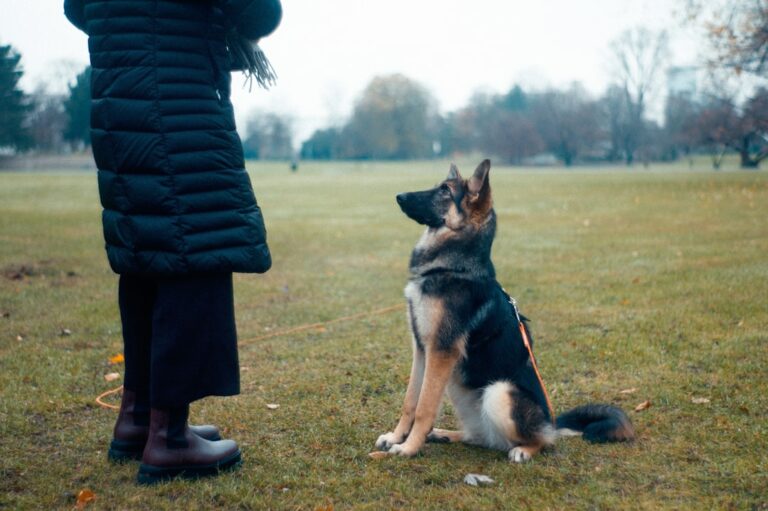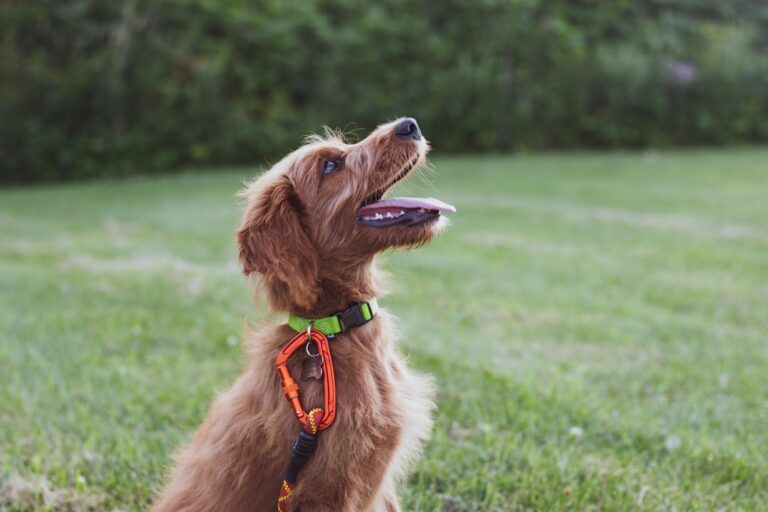Mastering Leash Training: Overcoming Common Challenges
Learn how to overcome common challenges in leash training, such as pulling, distractions, fear, and aggression, through effective solutions, positive reinforcement, and professional training guidance from Off Leash K9 Training in San Antonio, TX.
Introduction to Leash Training Challenges
Leash training stands as a foundational aspect of dog ownership, playing a pivotal role in the safety and well-being of both pets and their guardians. At its core, this training process aims to instill good manners and responsiveness in dogs, ensuring they remain controlled and calm during walks. However, the journey to a well-behaved dog on a leash is not without its obstacles. Many dog owners encounter a variety of challenges that can make leash training a daunting task. Among the most common issues are leash pulling, where dogs tend to lead rather than follow; distractions from the environment, which can disrupt a dog’s focus; and behavioral concerns such as fear or aggression, which complicate training efforts. Navigating through these challenges is crucial for cultivating a harmonious walking experience, enhancing the bond between dogs and their owners, and ensuring public safety during outings.
Addressing these challenges effectively requires a blend of patience, consistency, and the right training strategies. For instance, leash pulling, a natural instinct for many dogs excited by the sights and smells of the outdoors, can be mitigated with tools like front-clip harnesses and techniques that reward calm walking behavior. Distractions, too, can be managed by gradually exposing dogs to different environments, thereby enhancing their focus and obedience over time. Moreover, for issues rooted in fear or aggression, understanding the underlying causes and employing positive reinforcement can lead to significant improvements. Each dog is unique, and as such, overcoming the hurdles of leash training demands a tailored approach, one that fosters trust, confidence, and mutual respect between dogs and their owners.
Understanding Common Challenges
Pulling on the Leash
One of the most common complaints from dog owners is about their pets pulling on the leash. This behavior is often instinctual for dogs, as the leash restricts their natural desire to explore their surroundings and satisfy their curiosity. Not only can pulling cause discomfort for the owner, but it also creates safety hazards and hinders effective communication between the dog and its human. A practical solution to this issue is the use of training tools designed to discourage pulling, such as front-clip harnesses, which can significantly reduce this behavior.
Distractions During Walks
Another challenge in leash training is managing a dog’s attention amidst various distractions. Dogs are naturally curious and can easily become fixated on other animals, people, or even moving vehicles, making it difficult to maintain focus on leash training tasks. By gradually exposing your dog to different distractions in a controlled manner, you can help desensitize them and improve their concentration during walks. Consistent training in various environments can also enhance a dog’s ability to deal with distractions.
Fear and Anxiety
Fear and anxiety can significantly impact a dog’s ability to learn and follow leash training. These feelings may stem from past negative experiences or a lack of proper socialization. Signs of fear and anxiety in dogs can include trembling, hiding, or displaying aggression, all of which can impede training progress. By building trust and using positive reinforcement, along with gradual exposure to the sources of their fear, dogs can become more comfortable and less anxious during walks.
Aggression Towards Other Dogs or People
Dealing with aggression towards others during leash walks can be particularly challenging. This behavior may be driven by territorial instincts, fear, or a lack of proper socialization. Understanding the underlying causes of aggression is essential for developing effective training strategies. In many cases, professional help and behavior modification techniques are necessary to manage and reduce aggressive behaviors successfully.
Effective Solutions for Leash Training
Overcoming Pulling
Addressing the issue of pulling on the leash requires a combination of positive reinforcement and consistent training routines. Rewarding good leash manners with treats, praise, or playtime can encourage the desired behavior. Starting training sessions in low-distraction environments can also help dogs learn the basics of loose leash walking before facing more challenging settings.
Managing Distractions
To keep a dog’s focus away from distractions, integrating engaging activities like using interactive toys or treats during walks can be effective. Consistent use of verbal cues and hand signals can aid in communicating your expectations clearly to your dog. This approach, coupled with gradual exposure to distractions, can progressively improve your dog’s focus and ability to handle various stimuli.
Addressing Fear and Anxiety
Creating positive associations with leash walks is key to reducing fear and anxiety levels in dogs. Offering rewards and praise during walks can help build a dog’s confidence. For more severe cases of fear or anxiety, seeking advice from a professional trainer experienced in dealing with these issues can provide tailored solutions that address the individual needs of your dog.
Handling Aggression
Early identification and intervention are crucial when dealing with aggression. Establishing a consistent leadership role and setting clear boundaries can aid in managing aggressive behaviors. Desensitization and counterconditioning methods, ideally under professional supervision, can be effective in reframing negative associations and reducing aggressive responses.
The Role of Positive Reinforcement
Positive reinforcement is not just a method; it’s the cornerstone of building a healthy and cooperative relationship between dogs and their owners, especially during leash training. This technique focuses on rewarding the dog for good behavior rather than punishing undesirable actions. For instance, when a dog maintains a loose leash during a walk, immediately rewarding it with a treat or verbal praise (“Good job!”) makes the dog more likely to repeat this behavior in the future. The beauty of positive reinforcement lies in its versatility; rewards can be anything that motivates the dog, from tasty treats to a favorite toy or even extra playtime. This approach is proven to increase the likelihood of positive behaviors being repeated, and it also significantly strengthens the emotional bond between the dog and the owner. The act of rewarding creates a communication pathway that dogs can easily understand, making it an effective strategy for teaching and reinforcing leash manners.
Moreover, positive reinforcement encourages a joyful and stress-free learning environment for the dog. Instead of fearing punishment, the dog becomes eager to learn and please, knowing that there are pleasant outcomes for following commands. This method is particularly effective in leash training because it directly addresses the dog’s actions with immediate feedback, which is crucial for their learning process. For example, if a dog is prone to pulling on the leash but then walks nicely beside you for a few steps, a quick reward reinforces this as the correct behavior. Over time, these positive interactions not only improve leash skills but also contribute to a well-adjusted, happy, and obedient companion. For those looking to enhance their leash training techniques with positive reinforcement, seeking professional guidance from experts like those at Off Leash K9 Training of San Antonio, TX, can be incredibly beneficial. Their experienced trainers are adept at using positive reinforcement to achieve 100% obedience and off-leash reliability, ensuring a harmonious and fulfilling relationship between dogs and their owners. For more detailed guidance on positive reinforcement techniques and other training services, visit https://sanantoniodogtrainers.com/ and take the first step towards a more enjoyable leash walking experience.
Importance of Consistency and Patience
Consistency in leash training is not just about sticking to a schedule; it’s about maintaining uniformity in commands, rewards, and corrections. This uniformity helps dogs understand what is expected of them, minimizing confusion and speeding up the learning process. For example, consistently using the same command for a particular behavior, such as “heel” for walking nicely by your side, reinforces that behavior every time the command is used. Likewise, setting clear and consistent consequences for undesirable actions helps dogs learn boundaries more effectively. Patience complements consistency by giving dogs the time they need to internalize lessons. Dogs, much like humans, have varied learning curves, and what might take one dog a week to learn could take another a month. Recognizing and respecting this learning process is crucial.
Moreover, the journey of leash training is filled with ups and downs. It’s essential to approach it with a mindset that values progress, no matter how incremental. Celebrating small victories, such as a moment of calm in a previously chaotic walk, instills a sense of achievement and promotes a positive association with training. These celebrations not only boost the morale of the dog but also of the owner, reinforcing the bond and shared commitment to the training process. Patience also means understanding that setbacks are part of the learning process, not failures. With a patient and consistent approach, leash training can transform from a chore into an enjoyable and rewarding activity for both you and your canine companion. To ensure you’re employing the best practices in consistency and patience, consider consulting with professionals such as Off Leash K9 Training of San Antonio, TX. Their expertise can guide you through the challenges of leash training, ensuring a successful and fulfilling experience for both you and your dog. Visit https://sanantoniodogtrainers.com/ for more details on how to get started.
Professional Training Help
Navigating the hurdles of leash training can sometimes require more than just patience and consistency; it may necessitate the expertise of a professional. For those dog owners grappling with particularly stubborn challenges, turning to a seasoned professional can dramatically shift the trajectory of their training journey. Off Leash K9 Training of San Antonio, TX, stands out in this regard, offering a wealth of experience in behavior modification, tailored training plans, and unwavering support [customerproductcontext]. Their training approach is not one-size-fits-all; it’s meticulously customized to meet the unique needs and circumstances of each dog and owner, ensuring an optimal outcome.
What sets Off Leash K9 Training apart is not just their comprehensive understanding of dog behavior but their commitment to achieving 100% obedience and off-leash reliability. This level of assurance is pivotal for owners striving for a peaceful, enjoyable, and secure walking experience with their canine companions. The trainers at Off Leash K9 Training possess a deep understanding of the nuances of canine behavior, backed by a track record of success in transforming even the most challenging cases into success stories [customerproductcontext]. This expertise provides a solid foundation for fostering a harmonious and fulfilling relationship between dogs and their owners, making Off Leash K9 Training a premier choice for those seeking to overcome leash training obstacles. To explore how they can support your training goals, visit https://sanantoniodogtrainers.com/ for more details.
Conclusion: Encouraging Success in Leash Training
Achieving success in leash training is not just about correcting behaviors; it’s about understanding the unique needs and signals of your canine companion. Recognizing the importance of patience, consistency, and the right training strategies is crucial. Each dog has its own personality and learning pace, which means that a flexible yet consistent approach is key to fostering a positive learning environment. Techniques such as positive reinforcement have been shown to significantly improve leash training outcomes by rewarding good behavior, thereby encouraging its repetition. This not only enhances the bond between owners and their dogs but also contributes to a more enjoyable and stress-free walking experience for both.
For those encountering persistent challenges or seeking to ensure their training methods are as effective as possible, professional assistance can be invaluable. Off Leash K9 Training of San Antonio, TX, offers comprehensive training packages tailored to address a wide range of leash training issues. From basic obedience to more complex behavioral concerns, their experienced trainers employ proven techniques to achieve 100% obedience and off-leash reliability. Engaging with professionals can provide not only immediate solutions but also long-term strategies to maintain and build upon training successes. To learn more about how Off Leash K9 Training can support your leash training goals and to explore their range of services, visit https://sanantoniodogtrainers.com/. Take the first step towards transforming your leash training journey into a rewarding experience for you and your dog.













